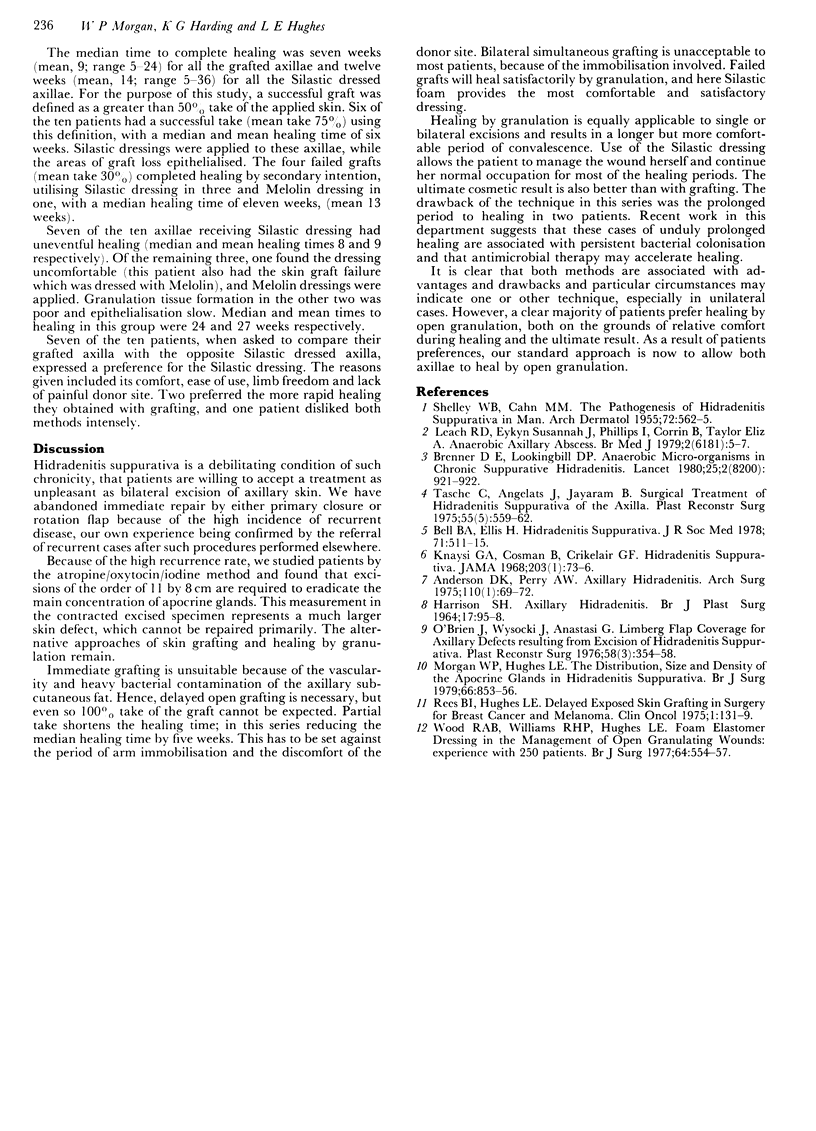Abstract
The treatment of established hidradenitis suppurativa demands complete excision of the apocrine glands in the affected area. Ten patients undergoing bilateral excision of the axillary skin, had one axilla grafted and the other allowed to heal by granulation utilising Silastic foam dressing, in order to compare the two methods. Split skin grafting resulted in more rapid healing of the excised area than healing by secondary intention. However, Silastic foam dressing resulted in certain healing with a good cosmetic result and avoided the need for immobilisation and a painful donor site. Most patients in this series preferred Silastic foam dressing to skin grafting.
Full text
PDF

Selected References
These references are in PubMed. This may not be the complete list of references from this article.
- Anderson D. K., Perry A. W. Axillary hidradenitis. Arch Surg. 1975 Jan;110(1):69–72. doi: 10.1001/archsurg.1975.01360070069012. [DOI] [PubMed] [Google Scholar]
- Bell B. A., Ellis H. Hydradenitis suppurativa. J R Soc Med. 1978 Jul;71(7):511–515. doi: 10.1177/014107687807100710. [DOI] [PMC free article] [PubMed] [Google Scholar]
- Brenner D. E., Lookingbill D. P. Anaerobic microorganisms in chronic suppurative hidradenitis. Lancet. 1980 Oct 25;2(8200):921–922. doi: 10.1016/s0140-6736(80)92081-4. [DOI] [PubMed] [Google Scholar]
- HARRISON S. H. AXILLARY HIDRADENITIS. Br J Plast Surg. 1964 Jan;17:95–98. doi: 10.1016/s0007-1226(64)80016-3. [DOI] [PubMed] [Google Scholar]
- Hardy J., Ciric I. S. Selective anterior hypophysectomy in the treatment of diabetic retinopathy. A transsphenoidal microsurgical technique. JAMA. 1968 Jan 8;203(2):73–78. [PubMed] [Google Scholar]
- Leach R. D., Eykyn S. J., Phillips I., Corrin B., Taylor E. A. Anaerobic axillary abscess. Br Med J. 1979 Jul 7;2(6181):5–7. doi: 10.1136/bmj.2.6181.5. [DOI] [PMC free article] [PubMed] [Google Scholar]
- Morgan W. P., Hughes L. E. The distribution, size and density of the apocrine glands in hidradenitis suppuritiva. Br J Surg. 1979 Dec;66(12):853–856. doi: 10.1002/bjs.1800661206. [DOI] [PubMed] [Google Scholar]
- O'Brien J., Wysocki J., Anastasi G. Limberg flap coverage for axillary defects resulting from excision of hidradenitis suppurativa. Plast Reconstr Surg. 1976 Sep;58(3):354–358. doi: 10.1097/00006534-197609000-00017. [DOI] [PubMed] [Google Scholar]
- Rees B. I., Hughes L. E. Delayed exposed skin grafting in surgery for breast cancer and melanoma. Clin Oncol. 1975 Jun;1(2):131–139. [PubMed] [Google Scholar]
- SHELLEY W. B., CAHN M. M. The pathogenesis of hidradenitis suppurativa in man; experimental and histologic observations. AMA Arch Derm. 1955 Dec;72(6):562–565. doi: 10.1001/archderm.1955.03730360068008. [DOI] [PubMed] [Google Scholar]
- Tasche C., Angelats J., Jayaram B. Surgical treatment of hidradenitis suppurativa of the axilla. Plast Reconstr Surg. 1975 May;55(5):559–562. doi: 10.1097/00006534-197505000-00005. [DOI] [PubMed] [Google Scholar]
- Wood R. A., Williams R. H., Hughes L. E. Foam elastomer dressing in the management of open granulating wounds: experience with 250 patients. Br J Surg. 1977 Aug;64(8):554–557. doi: 10.1002/bjs.1800640808. [DOI] [PubMed] [Google Scholar]


